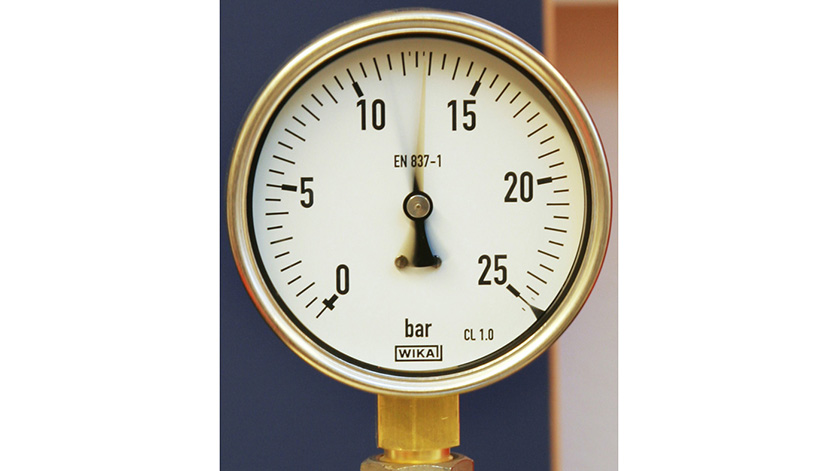
In more than 250 instrument reviews conducted by WIKA, a staggering 30% of gauges in a typical processing plant required corrective action. That’s one in four gauges. Vibration is one of the most common causes of pressure gauge failure in production facilities, posing a host of threats.
Just for starters, simply reading a gauge mounted to a vibrating piece of equipment can be difficult. Vibration also can move a gauge’s pointer mechanism “off zero” — making readings inaccurate. If you don’t address vibration risks in your production lines, your gauges will wear out prematurely. That, in turn, will result in an endless, expensive cycle of replacements with gauges that are apt to be just as ill-suited to high-vibration settings.
The dangers of vibration
In comparison to huge pieces of equipment, a gauge may seem to be a small concern. Yet, gauges are among the small details that, if not given proper attention, can leave you without information needed to address problems before they turn into larger ones. Gauges come in many different types, designs and levels of quality, so the most important consideration in selecting a gauge is matching it to its application. In fact, installing quality gauges appropriate for their setting is the best way to ensure both accuracy and long life. Doing so also cuts down on inventory and maintenance costs that can increase when both inferior and mismatched gauges are seen as a low-cost solution.
Three gauge designs that resist vibration
Gauge manufacturers use three major approaches to protecting gauges against vibration:
- Liquid filled. Fluid inside the gauge protects its internal components and eliminates the effects of vibration on the gauge’s readings. Some liquid-filled gauges are permanently sealed, while others can be filled in the field. Glycerine and silicone are typically used, though other fillers may be used depending on the application.
- Remote mounting. Rather than mount the gauge on a vibrating piece of equipment, this design mounts on a stationary structure nearby and gathers its readings through a capillary line.
- Direct drive. Built with just one moving part, direct-drive gauges offer excellent resistance to vibration, pulsation, and shock (another bonus: they resist extreme temperatures). With no gears, linkages, or springs to wear out or break and no recalibration necessary, direct-drive gauges offer extremely long service life.
Need advice? Turn to WIKA’s technical support team for help. They’re experts on engineering custom gauge solutions for every kind of operation — including ones just like yours.

